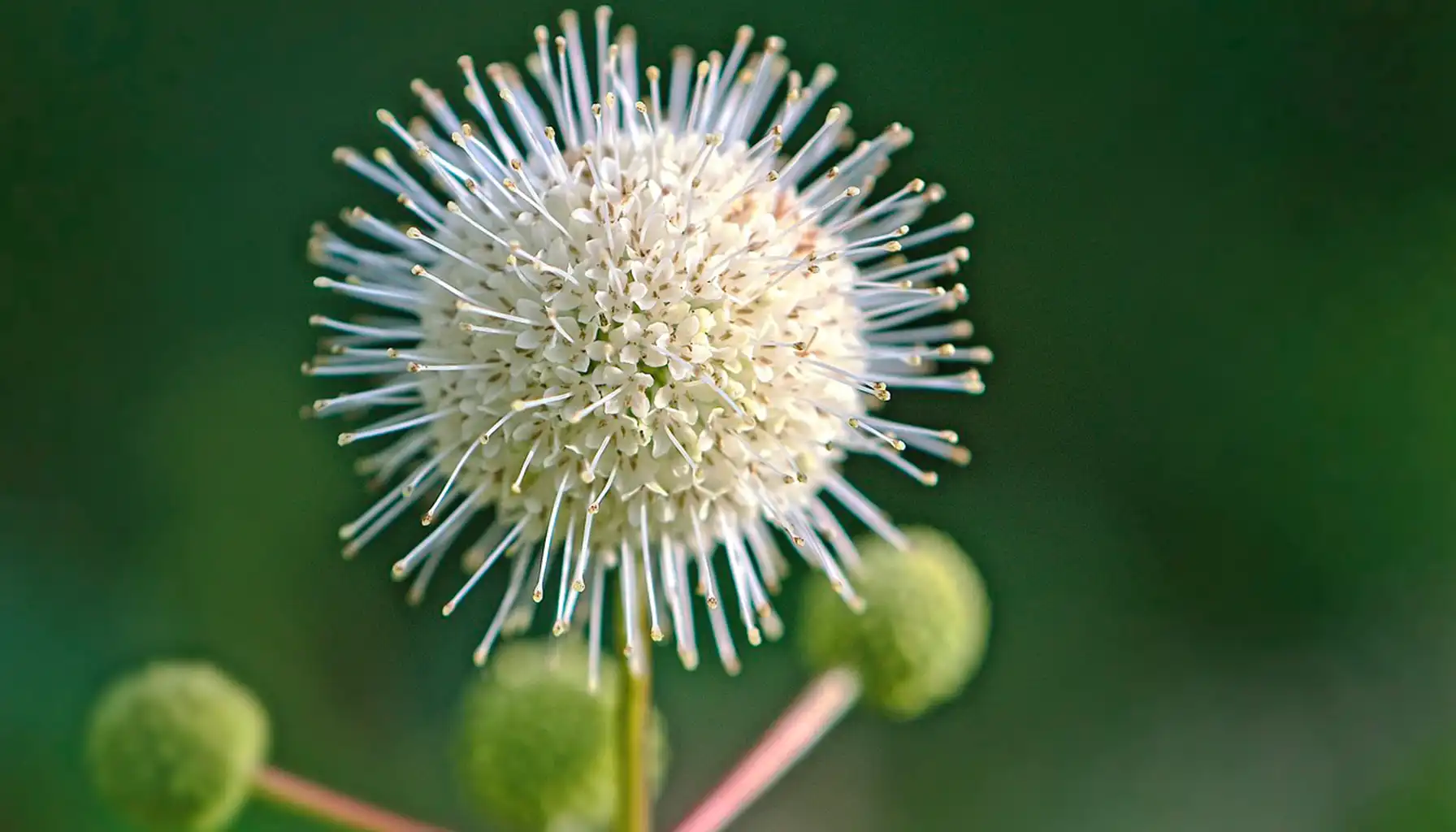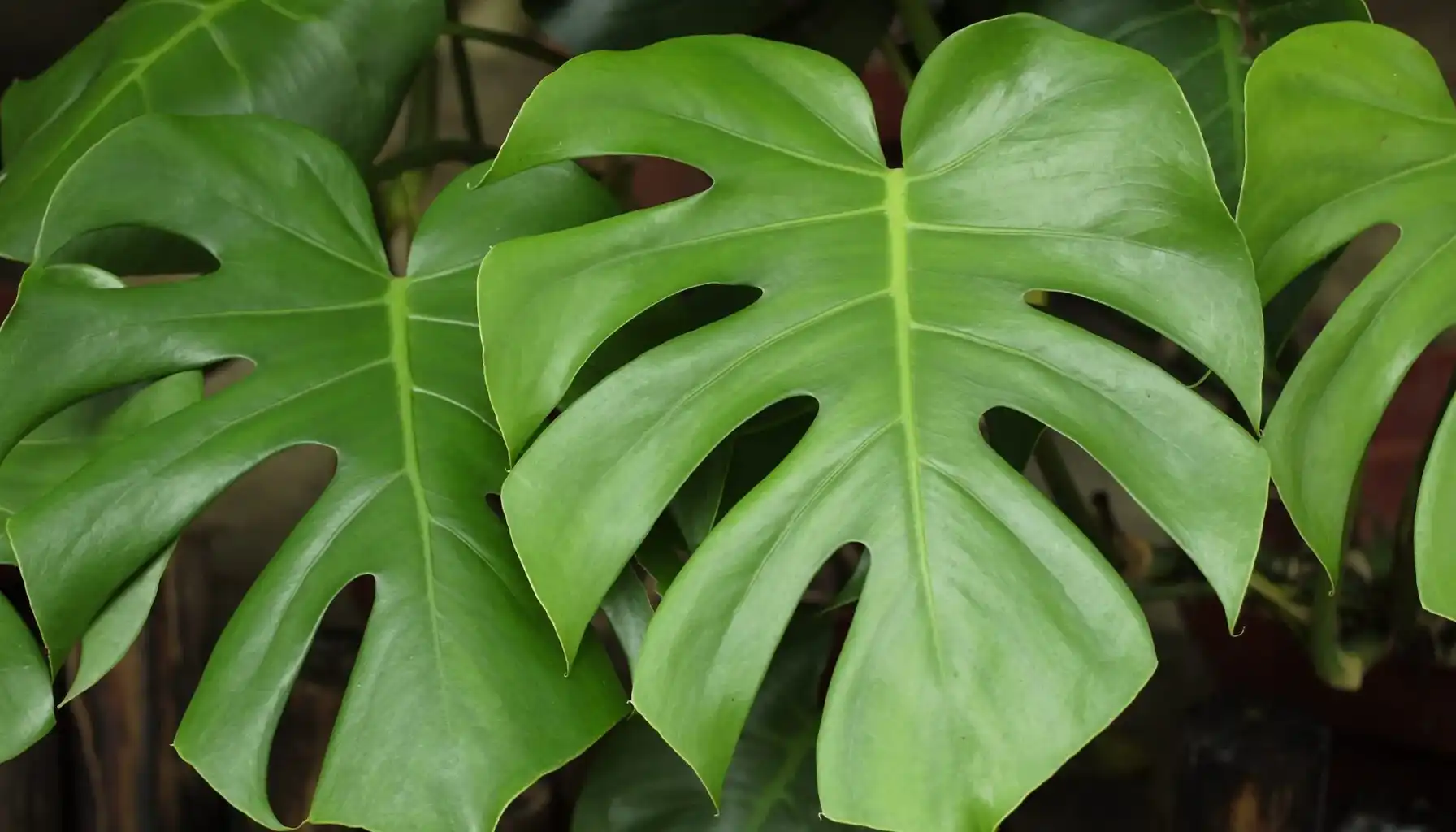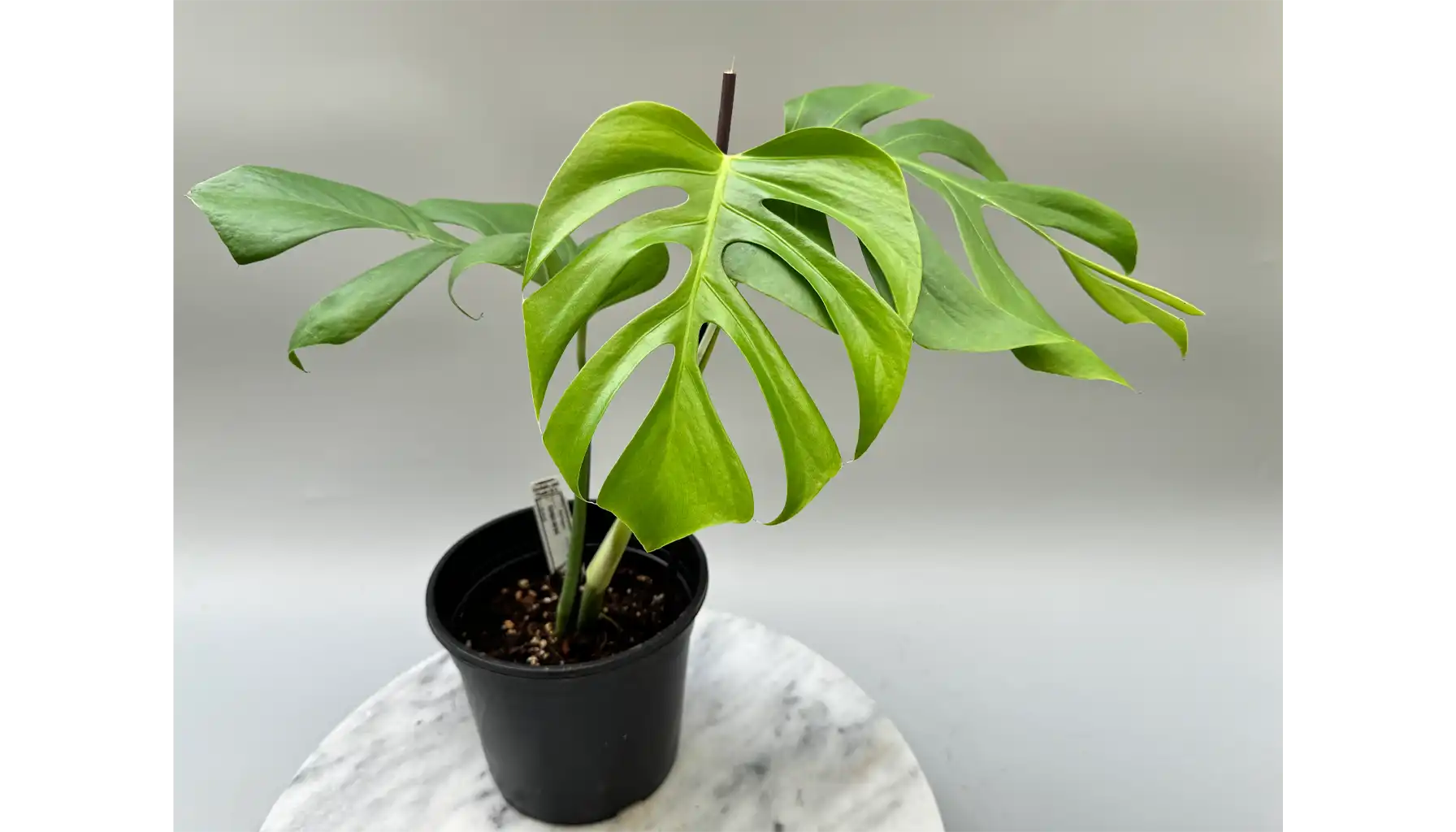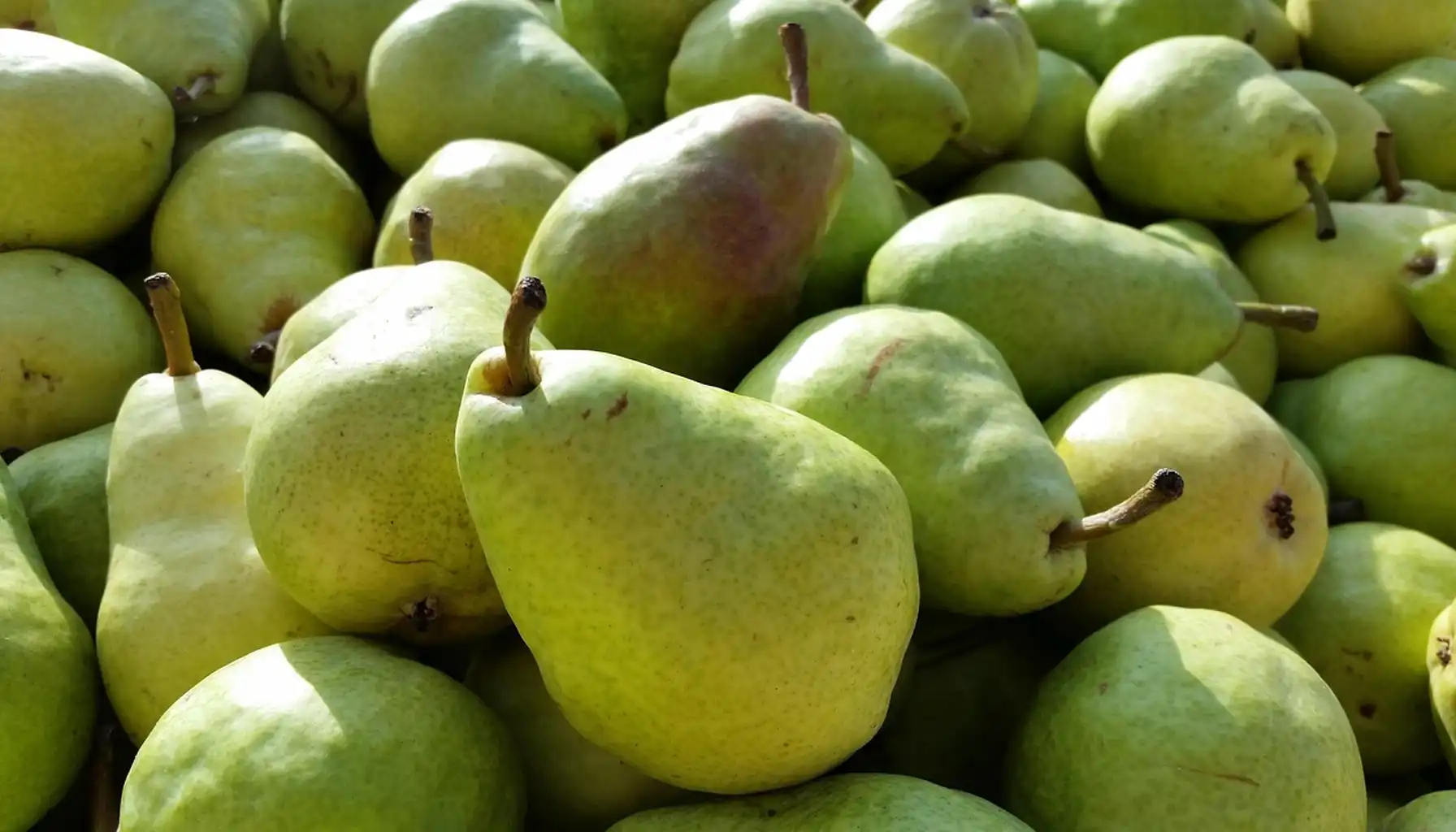Monstrous, anomalous, phenomenal – these are the names of a hemiepiphyte that cannot be confined to strict classifications but breaks the conventions of the flora and makes art from chaos with its structure, duality, and prominent leaves.
Monstera deliciosa is a one-of-a-kind natural creation that reveals its exotic, edible side only to those who manage to grow it properly. Its journey is as fascinating as its form, yet in order to tame it, it is crucial to acknowledge its specific needs, peculiar form, and its habitat the plant was once brought by.
We have compiled a comprehensive overview of the Monstera deliciosa care, its toxicity potential, the main propagation methods, and an innovative plant identifier app that may boost one’s gardening experience for good.
What Is the Deliciosa Monstera?
Monstera deliciosa, commonly known as the split-leaf philodendron, Swiss cheese plant, Mexican breadfruit, or fruit salad plant, is a tropical climbing species, native to the rainforests of southern Mexico and Central America. Its names are rather popular and loud, though the initial plant does not have anything to do with a true philodendron, for instance.
Delving deeper into its botanical characteristics, we should attribute Monstera to the Araceae family and the group of hemiepiphytes, i.e., the plants that start their lives on the forest floor, then climb up the trees in search of light, and anchor themselves with aerial roots. Though the foliage of this creation is rather distinctive (large, leathery, heart-shaped leaves decorated with deep splits and natural holes), its fruit is what makes it truly unique.
When fully ripe, Monstera deliciosa produces an elongated, cone-like fruit that tastes like a combination of pineapple, banana, and mango – this is exactly why some people call it a fruit salad. Nevertheless, it can be consumed only when ripe, for the unripe fruits contain calcium oxalate crystals that irritate the mouth and throat.
The Main Characteristics |
Scientific Name | Monstera deliciosa |
Common Names | Swiss Cheese Plant, Fruit Salad Plant, Mexican Breadfruit, Ceriman, and more |
Family | Araceae (Arum family) |
Native Range | Southern Mexico to Panama |
Type | Hemiepiphytic evergreen vine/ ornamental plant |
Growth Habit | Climbing with aerial roots |
Indoor Height | 2–3 meters (6.5–10 feet) |
Outdoor Height | Up to 20 meters (66 feet) |
Leaf Shape & Size | Large, glossy, heart-shaped; Deeply lobed and perforated (fenestrated); 25 to 90 cm long |
Flowering | Rare indoors; spathe and spadix inflorescence |
Fruit Appearance | Green, corn-like cone with hexagonal scales |
Fruit Safety | Ripe fruit is edible; unripe contains calcium oxalate crystals (toxic) |
Toxicity to Pets | Toxic to cats and dogs |
Support Needed | Benefits from moss poles or trellises for climbing |
Popular Varieties | Monstera Deliciosa Albo Variegata Monstera Deliciosa Thai Constellation |
Ideal Growing Conditions
No matter which plant you are planning to grow, it is always important to provide it with appropriate environmental conditions and give it everything it needs to thrive. Although it is almost impossible to mimic the natural habitat, we will try to consider key constituents of a healthy setting for the Monstera deliciosa variegata and the like.
Light
The hero of the article usually thrives in the environments that may boast the dappled light of the tropical rainforest canopy. Too much direct sunlight can scorch its leaves, while too little can stunt its iconic fenestration development.
Should be placed in bright, indirect light for optimal growth
Tolerates some early morning or filtered sunlight
Avoid harsh, direct afternoon sun, especially near south-facing windows
In low-light rooms, consider using a grow light to supplement
Watering
Any living being needs to drink, and so do the Monstera species. Watering should be balanced: too much water may lead to root rot, but too little typically means drooping and dry leaves.
Water when the top 1 to 2 inches (2.5 to 5 cm) of soil are dry
Reduce frequency in winter months when growth slows
Use room-temperature water to avoid shocking the roots
Signs of overwatering: yellowing leaves, mushy stems, fungus gnats
Signs of underwatering: wilting, crispy leaf edges
Related article: How Often Should You Water Your Plants? A Seasonal Guide
Temperature
As a tropical native, this species undoubtedly prefers warm conditions and is sensitive to frost. The most appropriate setting is indoors, since room temperatures are just fine for growing.
Best range: 20 to 30 °C (68 to 86 °F)
Minimum tolerated: 13 to 15 °C (55 to 59 °F) for steady growth
Cold (temperature lower than 10 °C or 50 °F) can damage or kill the plant
Keep away from cold windows, air conditioners, and heat vents to avoid temperature fluctuations
Humidity
High humidity also plays a crucial role, for it supports lush growth and mimics the plant’s natural rainforest environment. A little extra moisture in the air is always better than a lack of it.
Ideal humidity: 60% or higher.
Tolerates normal indoor humidity (around 40 to 50%) but may grow more slowly
Use a humidifier, pebble tray, or group plants together to boost humidity
Brown, crispy edges often signal that the air is too dry
Soil
Some plants, like Monstera, may need soil that retains some moisture but also drains well to prevent root rot. It might be difficult to imagine at first, yet with knowledge comes the skill. Consider loose, rich, and airy options (much like its native forest floor).
Optimal soil pH range: 5.5 to 7.0
Use a peat-based potting mix with added perlite and orchid bark
A good mix includes 40% potting soil, 30% perlite, 30% bark
Avoid compact, clay-heavy soils that retain too much water
Add activated charcoal to help with drainage and root health
See also: Soil Control: The Importance of pH Adjustment in Agriculture
How to Propagate Monstera Deliciosa?
Although propagation itself is a complicated process, it may multiply your plant and make your garden a bit more lush than it was before. As a rule, botanists accept two main varieties of the same process: stem cutting, which can be done in either water or soil. Here is how to do it step by step.
Step 1. Choose the Right Cutting Select a healthy stem with at least one node with one or two leaves and an aerial root. When chosen, use scissors to avoid plant damage or infection. |
Step 2 (1). Water Propagation Method Water propagation allows you to monitor root development and is perfect for those who are just starting. Place the cutting in clean, room-temperature water Make sure the node is submerged, but the leaf is not Keep the container in bright, indirect light Change the water every 3 to 5 days to prevent rot and bacteria If carried properly, roots are going to appear within 2 to 4 weeks Once the roots are 2 to 4 inches long, transplant the cutting into soil
|
Step 2 (2). Soil Propagation Method Soil propagation, on its part, avoids transplant shock later and may lead to stronger root systems from the very start. Dip the cut end in rooting hormone (optional but helpful) Plant the cutting in moist, well-draining soil Water lightly and cover with a plastic dome or a bag to maintain humidity Place in bright, indirect light Keep soil consistently moist but never soggy Gently tug after 3 to 4 weeks to check for root resistance
|
Step 3. Air Layering (Advanced) For mature floral creations, this could provide great support, since air layering encourages root development while still attached to the main plant. Choose a node and wrap it in damp sphagnum moss Cover with plastic wrap and secure with ties Keep moss consistently moist When roots form (in 4 to 8 weeks), cut below the node and plant it in soil
|
The Edible Fruit: How to Enjoy It Safely
Edible Monstera deliciosa fruits feel like a reward, especially if you grow them on your own. As we have covered before, they may boast a variety of flavors at the same time, i.e., pineapple, banana, and mango. As such, the fruit is usually long and cylindrical (up to 25 cm / 10 inches) and should be soft and creamy from the inside (when it is fully ripe and the outer scales start to fall off).
Warning: Never eat unripe Monstera fruit, for it can cause burning or numbness in the mouth!
Toxicity Explained: Is It Safe for Pets?
Is Monstera deliciosa toxic to cats and dogs? Yes, when it is exposed in an unhealthy format. In particular, the plant contains insoluble calcium oxalate crystals (called raphides), which are sharp, needle-like compounds. These crystals are present in all parts of the plant, e.g., the stems, leaves, and unripe fruit, and can cause discomfort when chewed or ingested.
These are the most common symptoms that your pet might have been poisoned by the Monstera:
Drooling or foaming at the mouth
Pawing at the mouth or face
Oral irritation (swelling of lips, tongue, or mouth)
Vomiting
Loss of appetite
Difficulty swallowing or breathing (rare)
Learn more about toxic plants and those that are safe for your pets and home with a smart digital assistant, AI Plant Finder. It offers unique features that may replace the real botanist when on the spot: identify plants, diagnose, manage the garden, estimate water needs, check illuminance, and even more. Let the app help you grow!
Keep such plants far away from your pets and children – create a safe yet flourishing garden that does not destroy the health of those you love.
Related AI Plant Finder Posts






